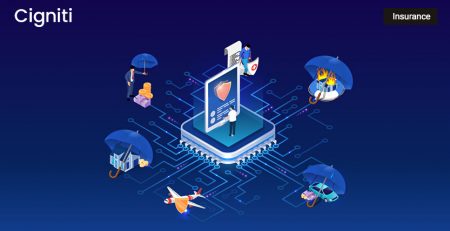Digital Acceleration Post Covid – Key trends and drivers
|
Listen on the go!
|
Digital change has become the new normal in the aftermath of the epidemic. Companies have advanced the digitalization of their customer and supply-chain contacts, as well as their internal operations, by three to four years, according to the 2020 McKinsey Global Survey of CEOs.
While the previous decade was all about researching and doing digital to generate revenue, market, new products/offers, and so on, pandemic has driven everyone to go from 100 to 1,000 mph on the digital path.
Digital transformation is now in overdrive
‘Digital’ was a buzzword within businesses prior to the pandemic, and most of them were researching digital technologies or transitioning themselves to ‘doing digital.’ This time, the shift and acceleration are real, and the ethos of ‘Being digital’ is alive and well. That is, at least, the pattern we are seeing!!
However, one thing is certain: the rate of change is unprecedented: in the United States, for example, e-commerce penetration jumped from 17 percent to 33 percent in just two months, exceeding the earlier prediction of 24 percent by 2024.
All industries have seen significant gains from digital strategies in the last year and want to expedite their journey to get a competitive advantage. In healthcare, digital transformation has paved the way for remote care, improved patient care, and drug development; in financial services and retail, digital assets have been widely adopted to improve customer experience; and in logistics and supply chains, digital assets have paved the way for simplified and efficient operations.
I see the following trends over the last year that has accelerated digital transformation:
- Survive – Strive – Thrive Strategy – While the focus during the first year of the pandemic was more on survival and strive strategy, many CIOs are now moving to a ‘thrive’ strategy to (innovation, digital transformation, rapid tech enablement…), while the focus during the first year of the pandemic was more on survival and strive strategy…
According to a McKinsey global survey of CEOs, the COVID Crisis has sped up the digitization of client contacts by several years. - Build Resiliency – Increasing the robustness of businesses and preparing for the next pandemic (in terms of Efficiency, Productivity, Security, Cost optimization etc.). CIOs must decide whether to surf this wave now or later.
- Autopilot Adoption of new business models – Existing and new business models/channels have emerged and have been adopted at a much faster rate (mobile, remote, virtual, rapid e-commerce, security, self-service, contactless, on-demand platforms, remote wellness/care, and so on), resulting in technology-driven acceleration to meet the new normal needs…
- Future proofing – From productification to platformification, there has been a paradigm change. To stay afloat during the pandemic, institutions and organizations of all kinds are experimenting with digital platforms. Following the epidemic, hybrid models will be used to enable recurrent revenues.
- CIO/CTO driving digital conversations – CIOs and CTOs are leading the digital discourse in ways it has never been before. The fact that technology will be the main force behind this rapid acceleration has been accepted by businesses.
- Hyper Personalization – Improved consumer experiences and personalization were the focus of the previous decade. Hyper personalization is the emerging trend following the pandemic, with e-commerce and online transactions reaching an all-time high. The FAANG companies will set the bar for others to follow in order to increase market share and client base, or even abandon the business.
According to the EIU poll, 77 percent of banking executives believe AI will be a game-changer after COVID-19. While increasing client experience through hyper-personalization is at the top of bankers’ AI goals, the technology is also considered as critical in areas like new business initiatives, fraud detection, and cyber-resilience. - Digital Leaders vs Laggards – Digital leaders were 7 times more innovative, 3 times more profitable, and provided a 38 percent better customer experience than digital laggards, according to the MIT CISR Digital Disruption Survey.
According to the poll, CIOs of digital leaders devote 52 percent of their time to innovation, whereas CIOs of digital laggards devote only 16 percent. Following the pandemic, the digital divide has only widened.
Business leaders today have no option but to reposition themselves to be successful in the new ‘Digital Economy.
Conclusion
Organizations have reimagined their business structures and consumer strategies as a result of the shift to digital-first. Traditional QA methods and infrastructure must be completely overhauled as part of a successful digital transformation strategy.
Cigniti’s Digital Assurance & Testing solutions handle the many facets of digital transformation while maintaining agility and customer centricity at its core. We test your complete digital value chain, including digital marketing, web portals, web content, digital assets, web analytics, and the full digital ecosystem, which includes cloud, mobility, big data, and connected devices.
Cigniti has created a dedicated Digital Testing Center of Excellence that includes checklists, frameworks, processes, testlets, methodologies, and best practices to ensure effective and efficient validations of text, images, and videos of applications across devices to help organizations accelerate their enterprise digital transformation.
Our approaches, strategies, and experts ensure that the apps are properly verified for User Experience (UX), which includes responsive web design patterns, screen resolutions, accessibility, usability, content, and navigation, among other things. Cigniti’s Digital TCoE takes advantage of our experience in related services like test automation, performance testing, and security testing to provide a faster time-to-market and a higher return on investment.
Need help? Get in touch with our experienced team of digital assurance & testing experts for a smooth digital transformation.





Leave a Reply